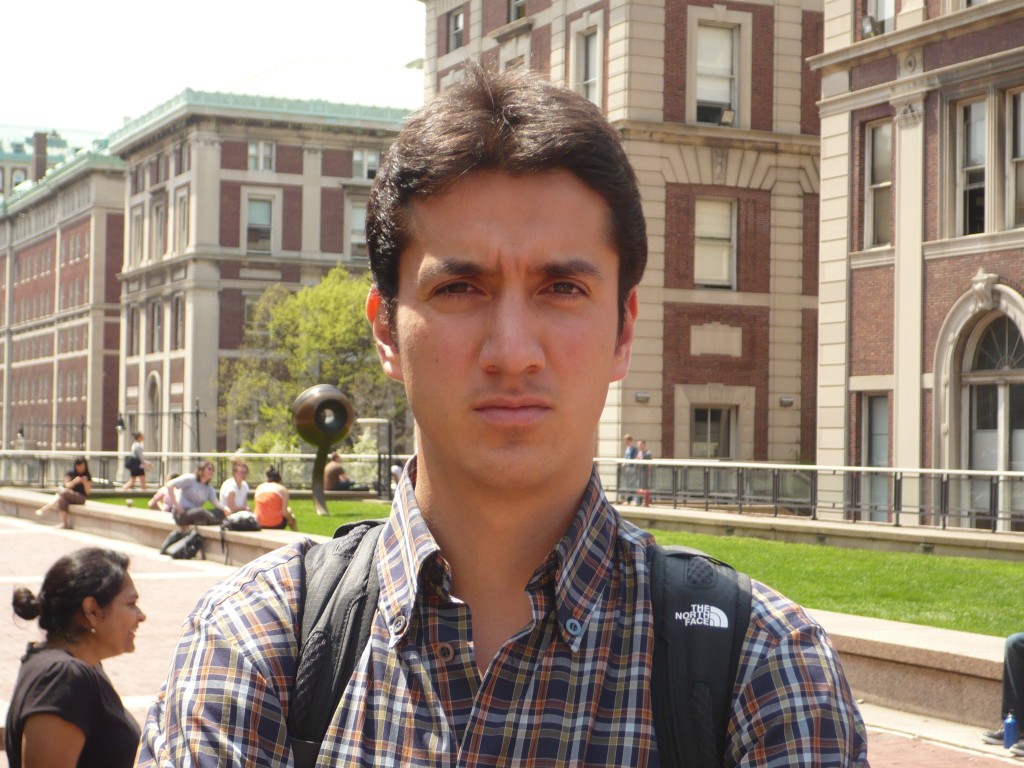BY MONICA ADAME
Denise, a powerful television anchorwoman, heard her smart phone beeped.
It was April 10.
“HELP, the town of Uruachi in Chihuahua is under siege by 150 hit men,” read the tweet.
She quickly retweeted the information and investigated the claim.
Three days later, Denise Maerker published an Op-Ed in the national newspaper El Universal, where she contributes regularly.
The events in the municipality of Uruachi – armed men taking control of isolated highways and terrorizing residents of remote and small towns – are being repeated all over Mexico’s northern states. Ms. Maerker’s access to both traditional and social media helped to expose this case nationally, but many others remain overlooked.
Extreme violence has intimidated traditional media outlets into silence. So, residents of the most affected states have developed social media strategies to cover the fight against drug cartels declared by the government in late 2006. They have turned to blogs, Twitter accounts and Facebook groups to get a constant stream of uncensored and timely information.
Building on these initiatives, last year, Alejandro Villarino, a Mexican graduate student at SIPA, decided to create an Ushahidi platform to map violence of drug trafficking in Mexico.
Ushahidi is a free, open source platform where the public gathers crisis information in real-time. The platform was originally developed to map reports of violence in Kenya after the post-elections period in 2008. In Mexico, the platform would had allowed citizens to report events related to narco violence directly on the website, by Twitter or through mobile phone.
Alex pitched his idea to José Luis Leyva, a Mexican graduate student as well, completing the dual degree on journalism and international affairs, and they hit it off. Before coming to SIPA, José Luis worked as a journalist for the local newspaper El Norte in Monterrey and then with its sister national publication Reforma.
Since 2006, 25 journalists have been killed and seven have gone missing according to the report “Silence or Death in Mexico’s Press” prepared by the Committee to Protect Journalists.
The attacks against journalists urge citizens to take an active role informing themselves about evolving events. A couple of weeks ago, Sofia Sada, a resident of Monterrey, was coaching football to kindergarten kids when a shooting began outside the school. “After running toward the cafeteria and making sure the kids were alright, I tweeted,” she said.
Sofia belongs to a new generation of Mexicans using social media to alert their networks about violence.
Internet users represent 29.4% of the Mexican population and Facebook has a penetration of almost 100% among them. Twitter users rose in the last two years, but still the number is lower than in the United States where users represent 7%.
Blogs with unrestricted and anonymous information also sprang rapidly. “Blog del Narco (www.blogdelnarco.com) has already won a spot as a source. At least as a reference point,” said Genaro Lozano, a professor on social movements at two private universities in Mexico City and a blogger. “[Blogs] have certainly helped to awaken traditional media,” he said.
After four years of facing war against drug cartels and a human cost of 35,000 deaths, groups like Contingente Tuiter have emerged.
“The Contingente was born spontaneously a year and a half ago when I asked who of the Twitter users would attend a demonstration,” said Jesús Robles Maloof, a Mexican human rights activist and very active tuitero (Twitter user – @roblesmaloof). “Twenty people showed up and we realized we shared a human rights identity,” Jesús said.
So far, the Contingente connects a network of human rights activists in eight cities. Each group voices an independent, local cause and disseminates it through social media.
“Social media is a reflection; it’s an amplifier,” said Jorge Soto, director and co-founder of Citivox (http://citivox.com/), a service platform linking citizens and decision makers in Mexico. Jorge worked with the Ushahidi developers during the aftermath of the earthquake in Chile in February 27, 2010. “We latinoamericanized the platform,” Jorge recalled laughing.
Nowadays, Citivox partners with the state of Guerrero (south of Mexico City) on a project to recover residents’ trust in public institutions. This platform allows citizens to report anything from water leaks to violence and has received 80,000 reports, 10% correspond to violent crimes. The information is shared with state authorities and response time has decreased from 72 to 24 hours. “People report because they know someone will answer,” Jorge said. “Trust is the base for everything.”
Alex and José Luis’ experience ended less happily. In March 2010, they chose to map drug violence in Monterrey, the capital of the rich, Northern state of Nuevo Leon and one of the cities hit the hardest. The place and timing were appropriate: high literacy rate and Internet connectivity, an organized civil society and strong discontent after two students were killed at the gates of an elite university.
They established categories like balacera (shooting), narco bloqueos (narco blockades), or casa de seguridad (safe house), but soon realized the challenge of verifying information. “We came across the greatest weakness of social media, that is fact-checking in crowdsourcing. Social media is so easy because it can or cannot be true. There is nothing to lose when you retweet,” José Luis said.
Alex voiced the same concern during our conversation. “I was worried the narco would use the platform if it was successful; so we tried to figure out how to protect the platform from false posts and prevent it from being discredited,” Alex said.
Jesús Robles, the human rights activist and founder of Contingente Tuiter, differs. “There are self-control mechanisms within social networks to verify the information,” he said. “The experiences are useful to get timely information.”
He recalls @reynosafollow, in the state of Tamaulipas, as the first citizens’ alert and information mechanism to emerge in Twitter. Faced with a lack of coverage of narco violence, residents of Reynosa assumed this task.
Similarly, Genaro Lozano, the professor on social movements, stressed that traditional and social media complement each other. He feeds two blogs: one in the national newspaper El Universal and a personal one where he shares NGO reports with low media dissemination (http://blogs.eluniversal.com.mx/escenari/).
“There is always questioning on what is published, both in traditional and social media. Social media is more transparent and enhances accountability. It makes citizens to question the quality of information and to demand more,” Genaro said firmly.
At the local level, media skews its coverage toward crime omitting information related to drug cartels. Mexico’s regional newspapers fail to report many of the murders, attacks on police and other violence linked to the war against drug cartels according to the report of Fundación MEPI de Periodismo de Investigación presented in November 2010 (http://fundacionmepi.org/narco-violencia.html).
As a response to the distortion in information, the envisioned platform of Alex and José Luis, the Mexican graduate students at SIPA, also provided a space for journalists to write articles under pseudonyms; pieces that would not get published in traditional media due to editorial and self-censorship and fear of retaliation. Each journalist would get a special ID and no one, besides Alex and José Luis, would know their identity.
Alex contacted a student from Colorado who volunteered to create the platform and operate it, while José Luis proposed the idea of the blog to four of his colleagues.
At the beginning of June 2010 and two weeks before launching the platform in Monterrey, Alex received an email from the Colorado student claiming a male voice in Spanish had threatened him by phone from a number in the US. In the email, he urged Alex to request help from the State Department and the United Nations and backed out of the project. The student immediately took down the website and the project fell apart.
Both Alex and José Luis were skeptical of the life threat; they still are. “You know Mexicans respond very differently to receiving a threat like that. We don’t believe it,” Alex said. “At the end what convinced me [to stop] was that I was risking someone else’s peace of mind.”
José Luis has a similar impression. “We both wanted to move forward, but we were only going to learn about the risk until something happened. I remained very eager to do it, but we felt discouraged to give the next step,” José Luis said.
A year later, Alex and José Luis have no idea on whether the student’s allegation was true or not. Twenty people knew about the project and most were in the US. Neither can imagine who might have leaked information about their plans.
Some newspapers have platforms mapping violence, but according to José Luis, these are poorly managed.
Violence has disrupted citizens’ trust in both media outlets. Earlier this month, Melissa Lotzer, who runs @trackmty, the main Twitter account alerting about drug violence in Monterrey, was accused of providing information to the narcos. Ms. Lotzer “disappeared” due to safety reasons and resumed her work after some days, according to her Twitter feed.
“It’s a problem of trust. Information is not transmitted from the society to the government and from the media to the society. It’s a schizophrenia,” José Luis said.
Alex characterized it as media paranoia. “There’s distrust and fear,” Alex said.
The challenge, according to Jorge, the director and co-founder of Citivox, is that Mexicans have no unified, single message and so, information in social media becomes noise. “We are fed up with everything, but there is no common dialogue,” Jorge said.
José Luis agrees. “We forget narcos are also citizens and I’m very certain they know well how to use [social media],” José Luis said. “They are better organized than us.”

